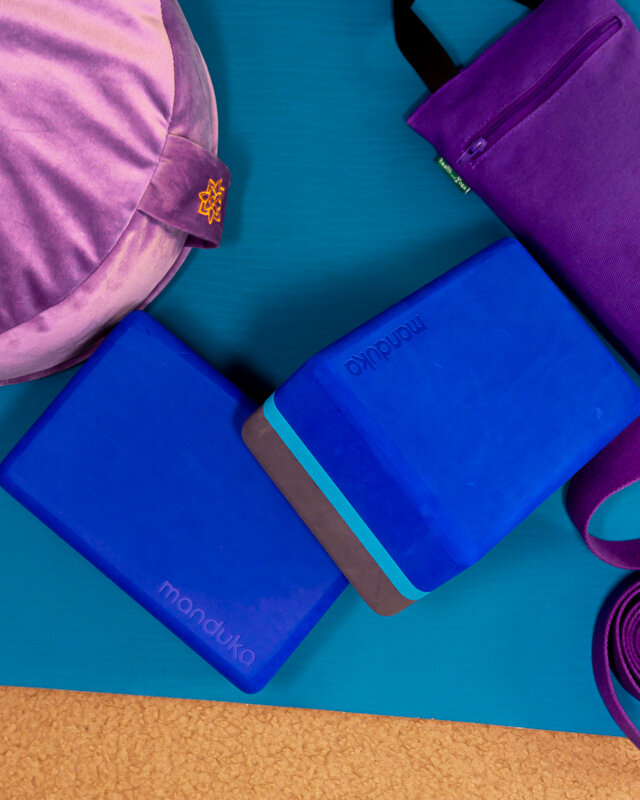Yoga Props 101: Yoga Blocks
Yoga props unlock the full potential and benefits of a yoga pose. Using yoga props in your practice increases your accessibility to these benefits and facilitates a different experience that you may not experience without props. While there are lots of different props out there, yoga blocks are the most commonly used. Yoga blocks are one of the most common props found in yoga studios and one of the most versatile props to use in a yoga practice. They are typically in the shape of a rectangular cube and are made of dense material that holds its shape such as wood, foam, or cork. Yoga blocks have three heights: low, medium, and high. The height of the yoga block can be adjusted to fit the needs of your practice. We will talk about the main functions of a yoga block, uses in poses, and alternatives.
Blocks can be used at a tall, medium, and short height.
Yoga blocks have 3 main functions: They extend the limbs, bear weight or pressure, and act as raised platforms or shelves.
When placed underneath the hands or the feet, yoga blocks can provide an added length to the limbs. For example, a block can be placed on the ground underneath your hands in a forward fold (Uttanasana) if your hands have limited accessibility to the ground. The blocks act as an extension of the arms and give more support to the folded spine. A yoga block under the hand in Triangle pose (Trikonasana) acts as an extension of the arm to the floor and also gives the hand a surface to rest on. This prevents tension in the back that can result from unnecessary rounding in the spine. In addition, the block height can be varied to accommodate a wide range of flexibility. With blocks, you have the ability to choose the intensity of the pose by adjusting the height of the blocks.
Triangle pose (trikonasana) with block
Because of their rigidity, yoga blocks can also take on weight or pressure and act as a feedback mechanism. In bridge pose (Setu Bandhasana), a block between the knees can remind the adductors in the legs to turn on and keep the knees and feet pointing in the same direction. This action prevents over-mobility in the knee that can lead to injury. In chair pose (Utkatasana), a block can be placed right above the knees in between the thighs. The block acts as a reminder to engage the adductor muscles (muscles responsible for closing the legs together). Without pressure from the legs, the block would fall. In both bridge pose and chair pose, the block calls attention to certain muscle engagement.
Chair Pose (Utkatasana) with block
Blocks that act as shelves or platforms lift different parts of the body off the ground or hold the body at a certain position. For example, in crow pose (Bakasana), squatting on top of a block places the knees in a higher position on the upper arm to squeeze in and more easily facilitates the transfer of body weight into the hands so that the feet can lift off.
Crow pose (bakasana) with block
In restorative yoga poses, blocks often take on a similar role of a shelf to place the body on or as a form of structural support for other props. In reclined resting pose, the blocks provide stability to the bolster as well as hold the bolster in a sloped position. The slope of the bolster can be adjusted by moving the blocks further up or down the bolster.
Restorative reclined pose with blocks to support the bolster
Alternatives to yoga blocks are easy to find around the house. A sturdy water bottle filled with water works well if the blocks are used as an extension of the limbs. A stack of books bound together by a string or an upside down pot are also great alternatives to blocks. In many restorative poses, a block can be substituted with a stack of pillows or a tightly rolled up towel or blanket secured with a string.
Yoga blocks are versatile props that can take your yoga practice to a different level. They can be used in many common yoga poses and other types of yoga such as yin and restorative yoga. Consider a new perspective on a familiar pose by incorporating yoga blocks into your personal practice.
Please follow Nirel @nireltheyogini on Instagram and Facebook for more tips and tricks on yoga blocks and other yoga props..






